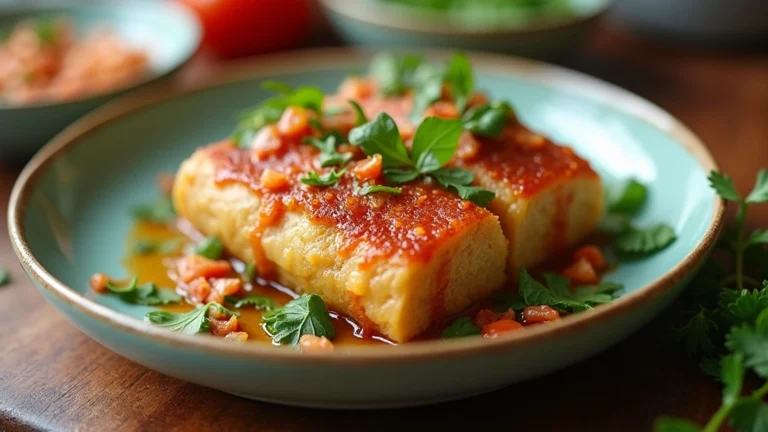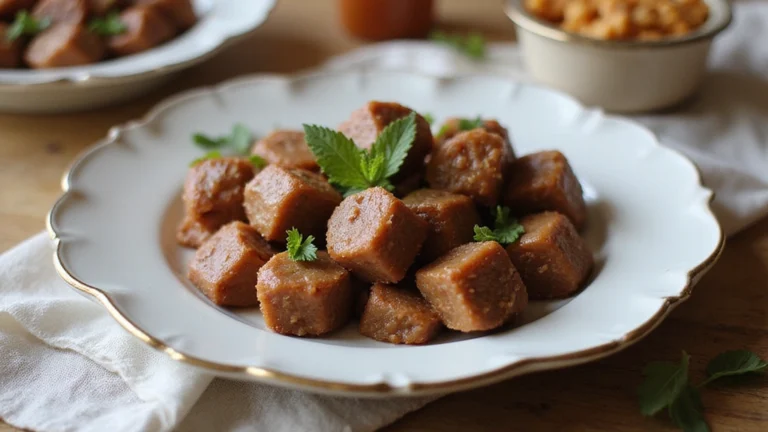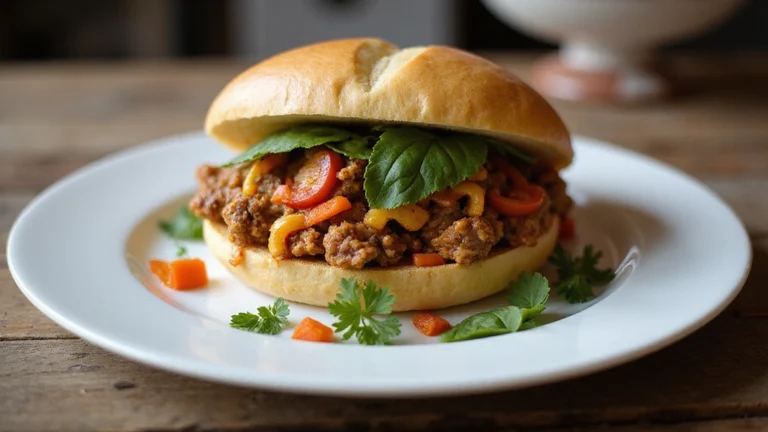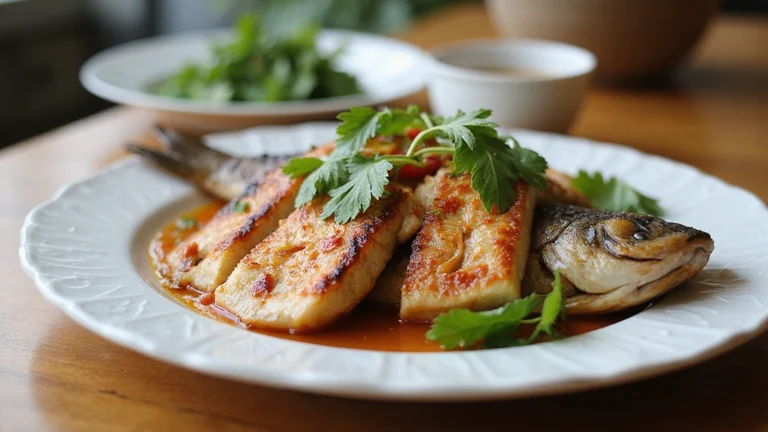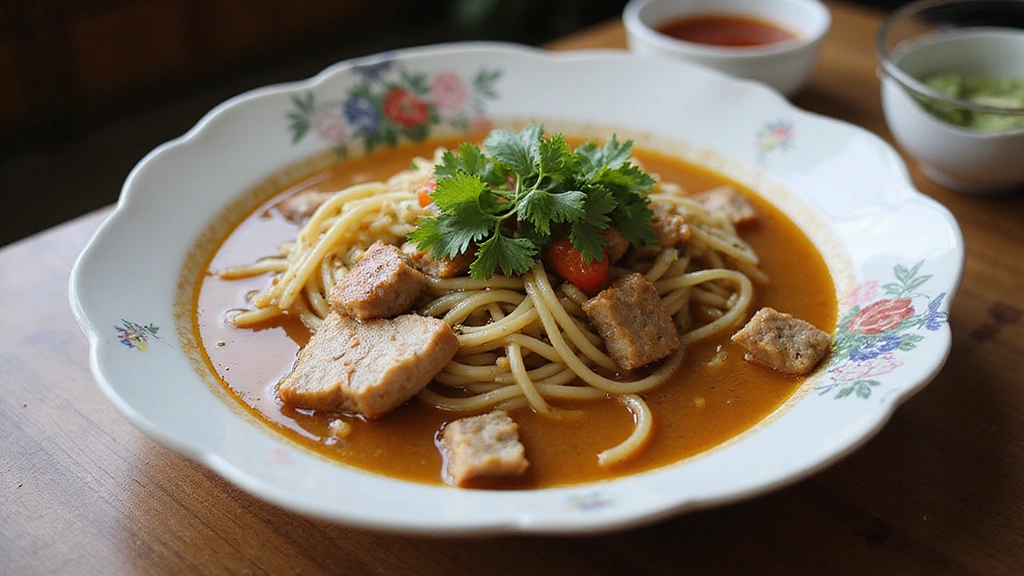
Banh Canh Gio Heo is a delightful Vietnamese noodle soup that warms both the body and soul.
With its rich, savory broth and tender pork leg, this dish is a comforting staple that showcases the essence of Vietnamese cuisine.
I first tasted this dish during a family gathering, where the aroma of simmering broth filled the air, instantly making it a cherished memory.
Perfect for a cozy dinner or a festive occasion, Banh Canh Gio Heo is sure to impress your family and friends with its depth of flavor and heartiness.
The History and Cultural Significance
• Banh Canh Gio Heo traces its origins to the central region of Vietnam, particularly in places like Hue, where it was originally created by local cooks to celebrate special occasions.
• The dish evolved over decades as regional ingredients and cooking techniques influenced its preparation, eventually becoming the beloved version we know today.
• In Vietnamese culture, this dish traditionally appears at family gatherings and celebrations, symbolizing unity and warmth.
• While many variations exist across different regions, the authentic version maintains a rich, gelatinous broth and thick noodles that set it apart from imitations.
Recipe Overview
Nutritional Information (per serving)
Ingredients
Essential Equipment Guide
Large Stock Pot: This tool is essential for simmering the broth to extract maximum flavor from the pork leg. Look for a pot with a heavy base to prevent scorching and ensure even heat distribution.
Fine Mesh Strainer: Important for achieving a clear broth by removing impurities and fat. A good quality strainer should have a sturdy handle and fine mesh to catch even the smallest particles.
Soup Ladle: Useful for serving the soup and portioning noodles and meat easily. Choose one with a deep bowl and a long handle to reach into the pot comfortably.
Preparation Methods
Simmering the Broth: This technique is crucial for extracting maximum flavor from the pork leg. Start with cold water and gradually bring it to a simmer to ensure the flavors meld beautifully. Keep the heat low and allow it to simmer gently for at least two hours, skimming off any foam that rises to the surface for a clear broth.
Preparing the Noodles: Properly cooking banh canh noodles is essential to achieving the right texture. Follow the package instructions, typically boiling them separately before adding them to the soup, ensuring they remain chewy and do not clump.
Garnishing: The final touch is important for both flavor and presentation. Use fresh herbs and lime to enhance the dish’s taste, balancing the rich broth with bright, fresh notes. Always add garnishes just before serving to maintain their vibrant color and freshness.
Step 1: Prepare the Pork Leg
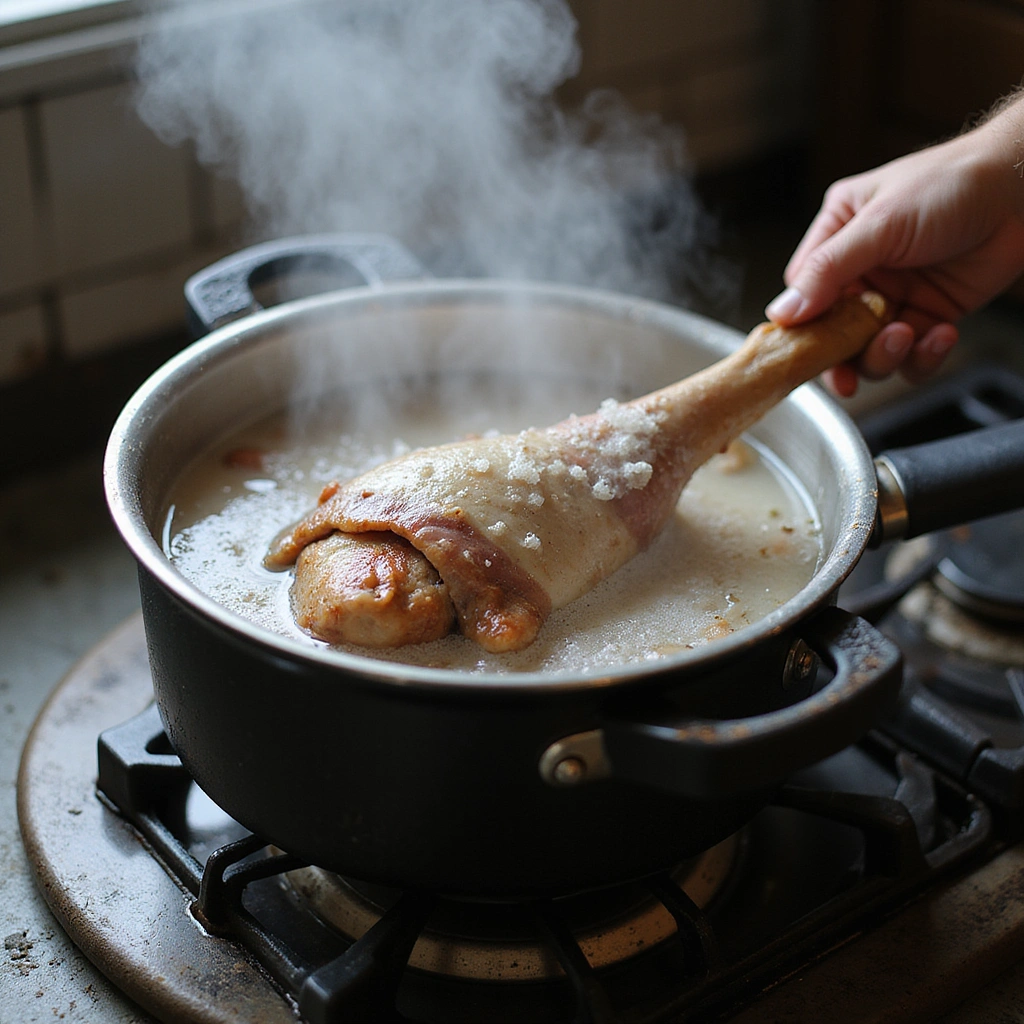
Start by rinsing the pork leg under cold water to remove any impurities.
Place it in a large pot and cover with cold water, ensuring it’s fully submerged.
Bring the water to a boil, then reduce to a simmer and cook for about 10 minutes.
This initial boil helps to clarify the broth and eliminate excess fat.
Step 2: Prepare the Broth
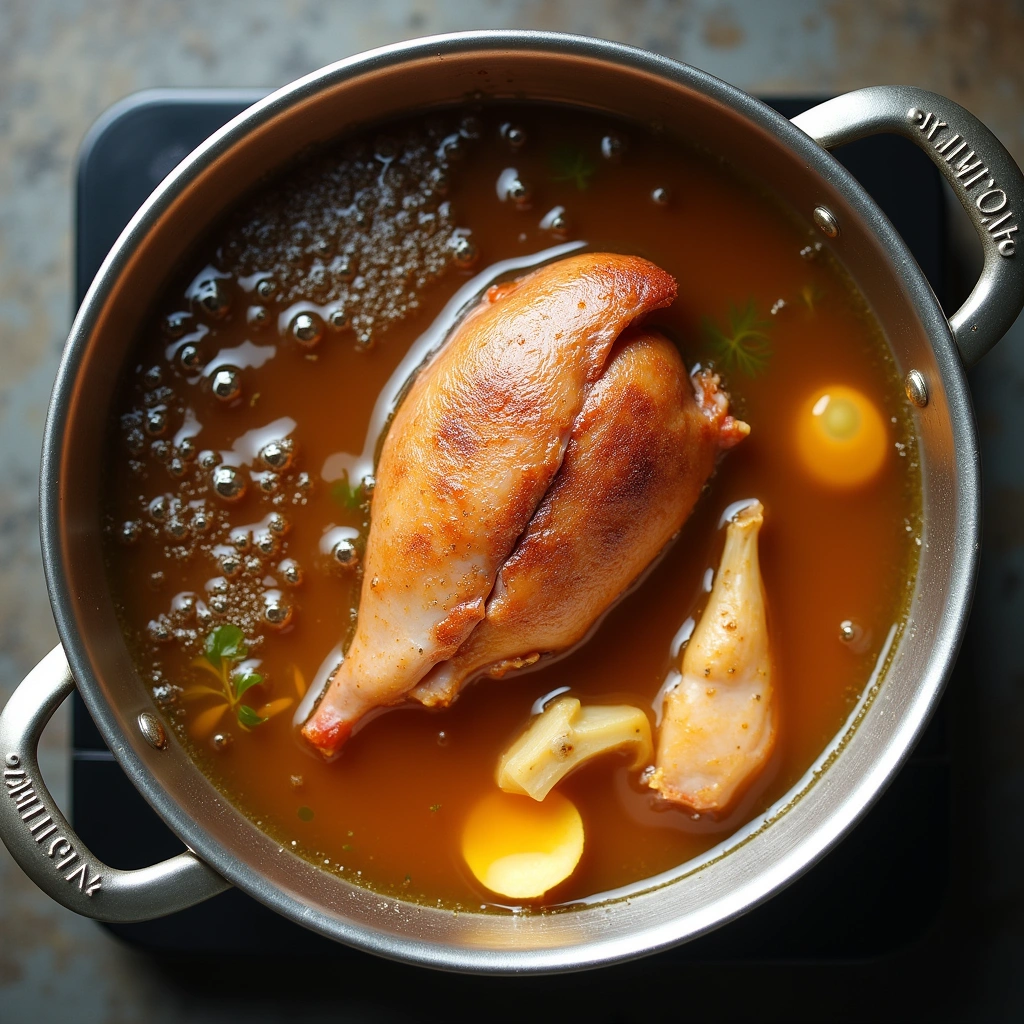
After the initial boil, drain the pork and rinse it again under cold water.
In the same pot, add 2 liters of fresh water along with the pork leg, halved onion, and ginger slices.
Bring the mixture to a boil, then reduce the heat to low to let it simmer gently.
Simmer for at least 2 hours, skimming off any foam that appears to keep the broth clear.
Step 3: Cook the Noodles
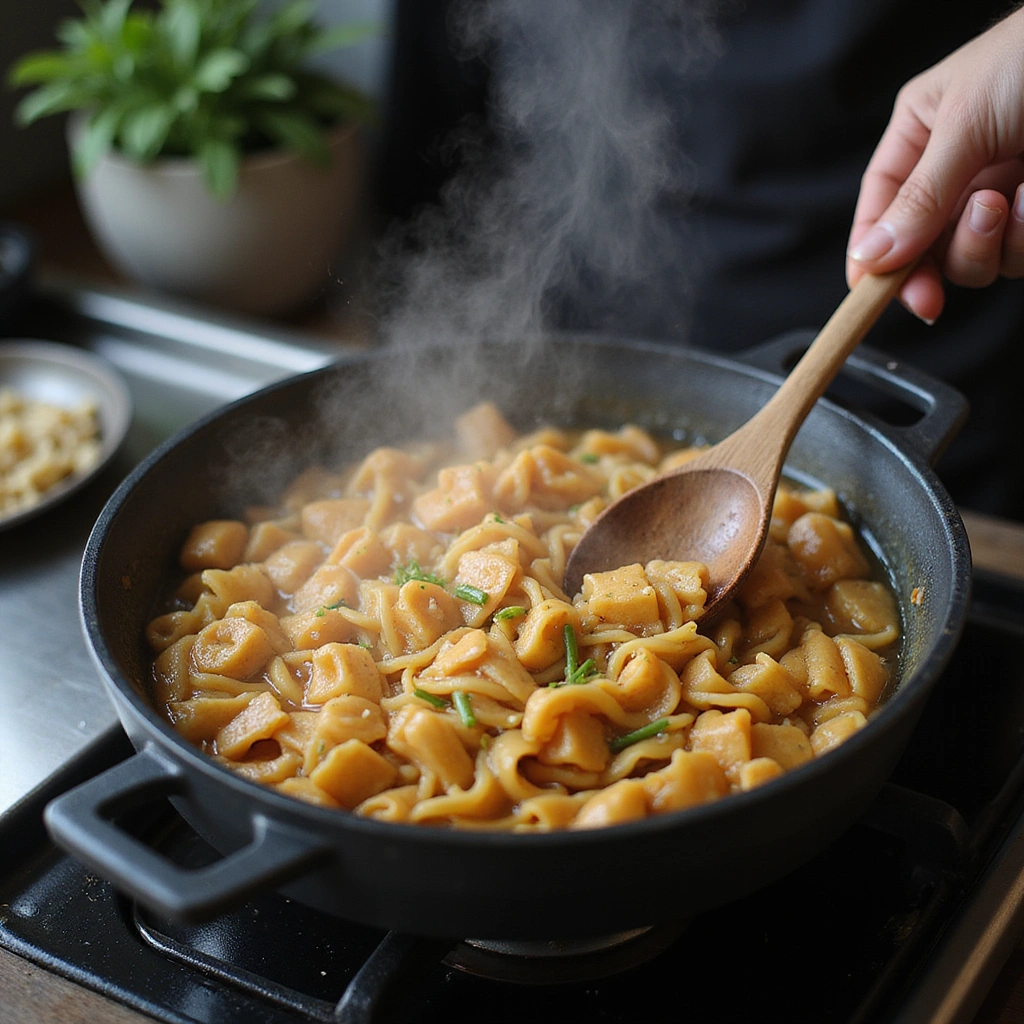
While the broth simmers, prepare the banh canh noodles according to the package instructions.
Usually, this involves boiling them in a separate pot until they are al dente.
Once cooked, drain and rinse under cold water to stop the cooking process.
This step ensures the noodles remain firm and do not clump together.
Step 4: Strain the Broth
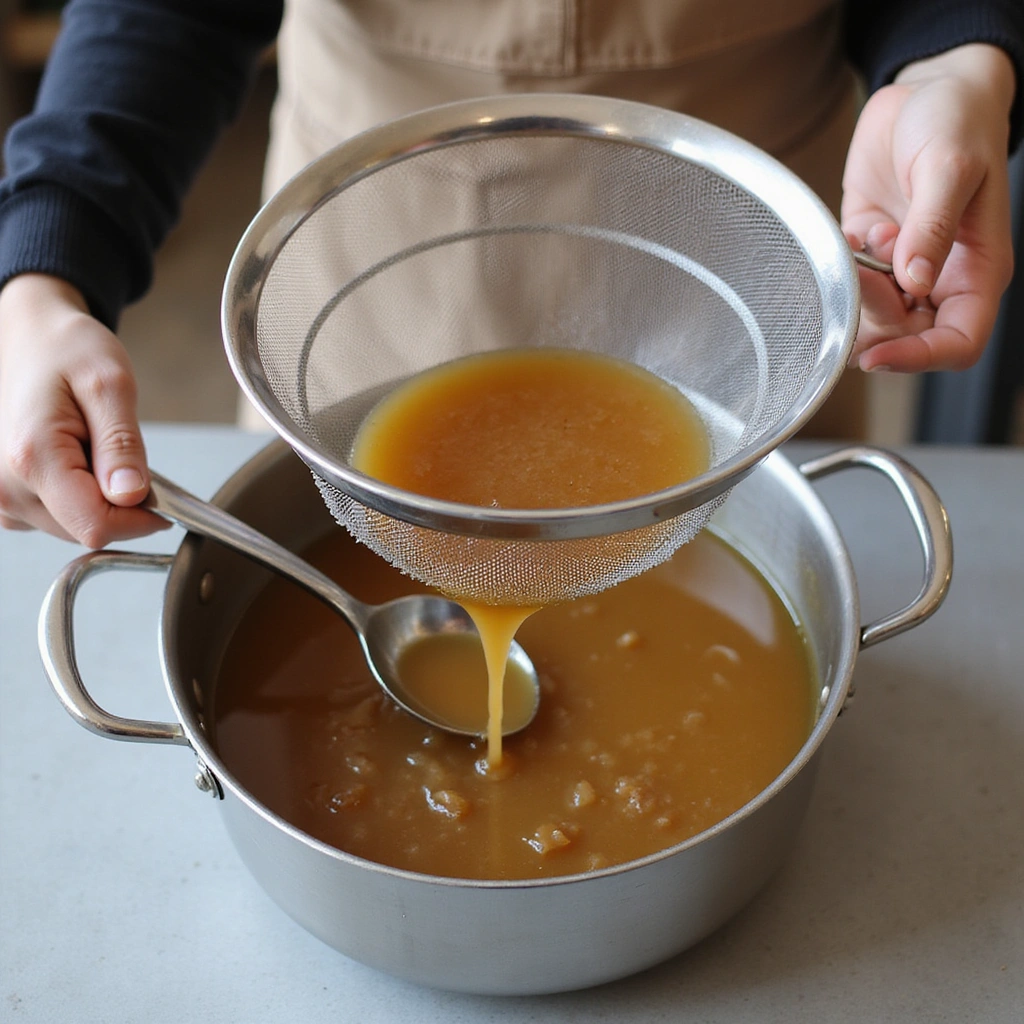
After simmering the broth for two hours, it’s time to strain it for a clear soup.
Use a fine mesh strainer to carefully remove the pork, onion, and ginger from the pot.
Discard the solids and return the clear broth to the pot over low heat.
Taste and adjust seasoning if necessary, adding salt to enhance the flavor.
Step 5: Slice the Pork
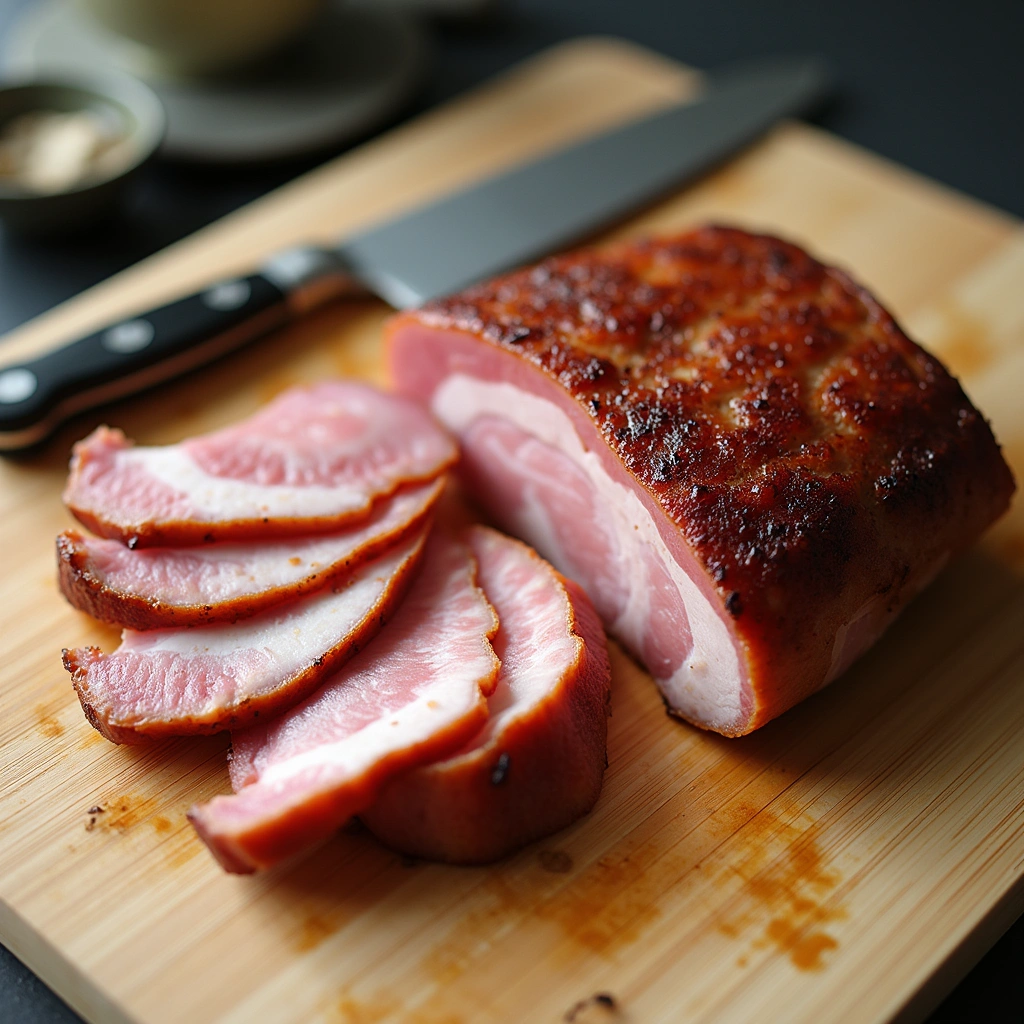
Once the pork leg has cooled slightly, slice it into bite-sized pieces, being careful to include some of the gelatinous skin.
This will add a rich texture to the dish that is characteristic of Banh Canh Gio Heo.
Place the sliced pork aside until you’re ready to serve.
Ensure you have a mix of lean meat and some skin for the best flavor.
Step 6: Assemble the Bowls
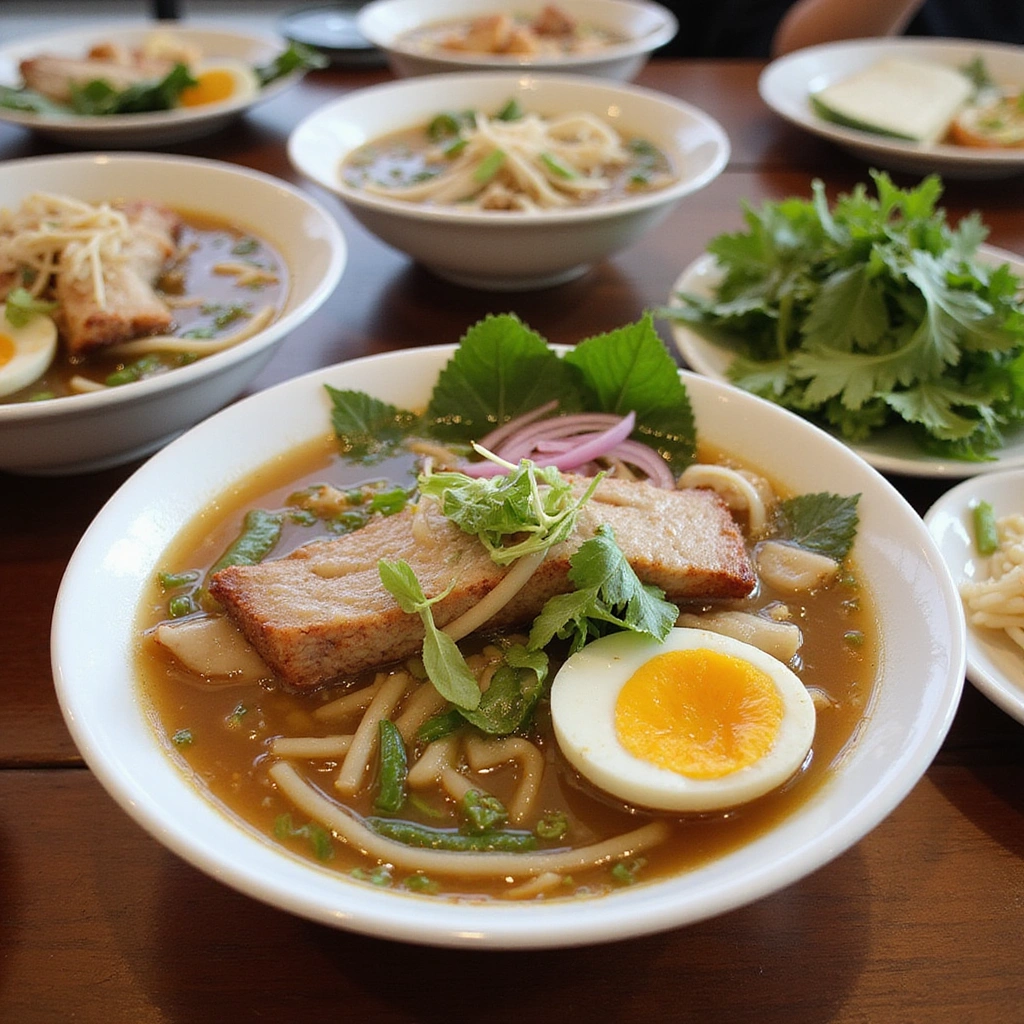
To serve, place a portion of cooked banh canh noodles in each bowl.
Ladle the hot broth over the noodles, ensuring they are well covered.
Top each bowl with slices of the prepared pork and a generous handful of bean sprouts and fresh herbs.
Serve with lime wedges on the side for guests to add their desired acidity.
Step 7: Add Finishing Touches
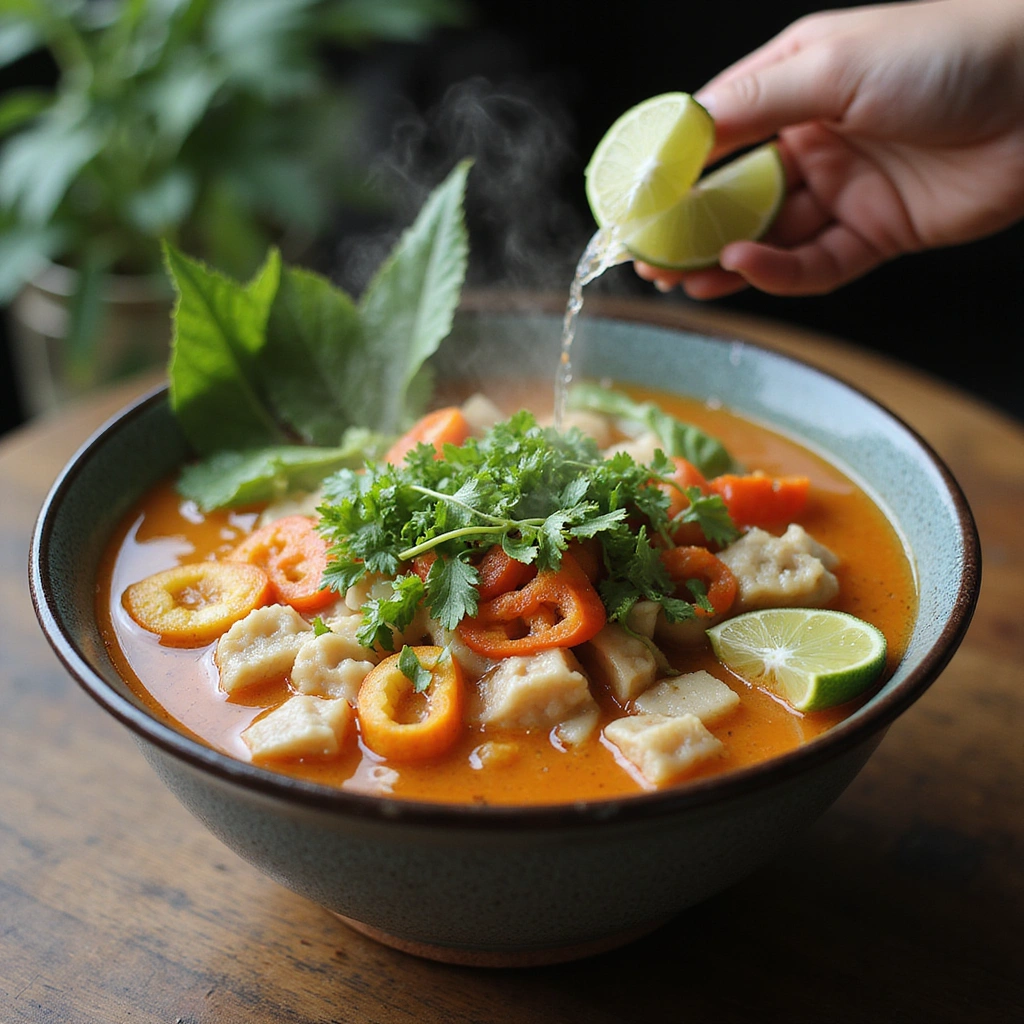
Before serving, add a sprinkle of sliced green onions and cilantro on top for freshness.
You can also offer sliced chilies for those who prefer a spicy kick.
Ensure that the bowls are hot and the broth is steaming to enhance the overall experience.
Serve immediately for the best flavor and texture.
Critical Timing and Temperature Guide
Simmering the Broth: Simmer the broth for at least 2 hours on low heat. Look for a gentle bubbling and a rich aroma as indicators of doneness. Avoid boiling vigorously as it can cloud the broth.
Cooking Noodles: Follow package instructions for the banh canh noodles, typically around 5-7 minutes of boiling. Ensure they are cooked al dente to maintain texture in the soup. Rinse them under cold water immediately after cooking to stop further cooking.
Serving Temperature: Ensure that both the broth and bowls are hot when serving. A steaming bowl enhances the dish’s flavor and provides a comforting experience.
Pro Tips for Banh Canh Gio Heo
• Ingredient Selection: Choose a high-quality pork leg with a good amount of skin and fat for rich flavor.
• Preparation Secret: Rinsing the pork before simmering helps create a clearer broth by removing impurities.
• Temperature Management: Keep the broth at a low simmer rather than a boil to develop a deeper flavor without clouding the broth.
• Texture Enhancement: Including some gelatinous skin in the pork adds a silky mouthfeel to the soup.
• Flavor Layering: Taste the broth at different stages and adjust the seasoning gradually to build a balanced flavor.
• Make-Ahead Strategies: You can prepare the broth in advance and store it in the fridge for up to 3 days; reheat before serving.
• Restaurant-Quality Finishing Touches: Use high-quality herbs and fresh lime for garnishing for an authentic touch.
• Equipment Optimization: A heavy-bottomed pot helps maintain consistent heat for even cooking.
Troubleshooting Common Issues
• Broth Too Greasy: This can happen if too much fat is left in the broth. Skim off excess fat during cooking and strain thoroughly to achieve clarity.
• Noodles Too Soft: Overcooking the noodles leads to a mushy texture. Always cook just until al dente and rinse under cold water to stop cooking.
• Flavor Too Bland: If the broth lacks flavor, it may need more simmering time or additional seasoning. Taste and adjust as necessary.
• Textural Issues with Pork: If the pork is tough, it may not have been cooked long enough. Ensure it simmers gently until tender.
• Garnish Deterioration: Adding herbs too early can wilt them. Always add fresh herbs just before serving for vibrancy.
Variations and Regional Differences
• Hue Style Banh Canh: This version includes additional spices like star anise and cinnamon for a more aromatic broth, reflecting the flavors of the central region.
• Seafood Variation: In coastal areas, some variations replace pork with seafood, such as shrimp or crab, resulting in a lighter broth.
• Vegetarian Option: A vegetarian version can be made using vegetable broth and mushrooms, offering a different yet satisfying flavor profile.
• Modern Interpretations: Chefs may incorporate trendy ingredients like truffle oil or serve it with artisan noodles to appeal to contemporary tastes.
Food Science Behind the Recipe
• Gelatin Extraction: The slow simmering of the pork leg releases collagen, which transforms into gelatin, giving the broth its luxurious mouthfeel and body.
• Umami Development: Long cooking times help develop umami flavors, enhancing the overall taste of the broth as the proteins break down.
• Emulsification: The fat from the pork emulsifies into the broth during simmering, creating a rich, cohesive flavor throughout the soup.
Frequently Asked Questions
What’s the most common mistake people make when preparing Banh Canh Gio Heo? The most common mistake is not simmering the broth long enough, which leads to a bland flavor. Always allow at least two hours for the best taste.
Can I prepare components of this dish in advance? Yes, you can prepare the broth a day in advance and store it in the refrigerator. Reheat it before serving for the best flavor.
How do I adapt this recipe for dietary restrictions? For gluten-free options, ensure that the noodles are made from gluten-free ingredients, and substitute the pork with tofu or vegetables for a vegetarian version.
What’s the best way to store and reheat leftovers? Store the soup in an airtight container in the fridge for up to 3 days. Reheat gently on the stove or in the microwave, adding a splash of water if needed.
Can I freeze this dish? Yes, you can freeze the broth and noodles separately. Thaw overnight in the fridge before reheating.
What wine or beverages pair best with this dish? A light Riesling or a crisp lager complements the richness of the soup beautifully.
How can I scale this recipe up for a crowd? Simply multiply the ingredients by the number of servings you need, ensuring you have a large enough pot to accommodate the increased volume.
What side dishes complement this recipe best? Fresh spring rolls or a simple green salad with a tangy dressing pair nicely with this rich soup.
How do professional chefs elevate this dish for restaurant service? Chefs often use high-quality, locally sourced ingredients and focus on presentation, serving in elegant bowls with beautifully arranged garnishes.
Serving and Presentation Guide
• Traditional Presentation: Serve Banh Canh Gio Heo in deep bowls, garnished with fresh herbs and lime wedges on the side. This traditional approach highlights the freshness and richness of the dish.
• Modern Plating Ideas: Consider using a large, shallow bowl to showcase the noodles and broth beautifully, with a sprinkle of herbs artfully arranged on top.
• Accompaniment Suggestions: Pair with fried shallots, chili sauce, or pickled vegetables to add extra flavor and texture.
• Special Occasion Presentation: For celebrations, use decorative bowls and add edible flowers or microgreens for an elegant touch.
Conclusion
Banh Canh Gio Heo is a dish that brings warmth and comfort to any meal.
With its rich flavors and heartwarming aroma, it’s a perfect choice for family gatherings or special occasions.
I encourage you to try making this delightful Vietnamese noodle soup at home and experience its magic for yourself.
